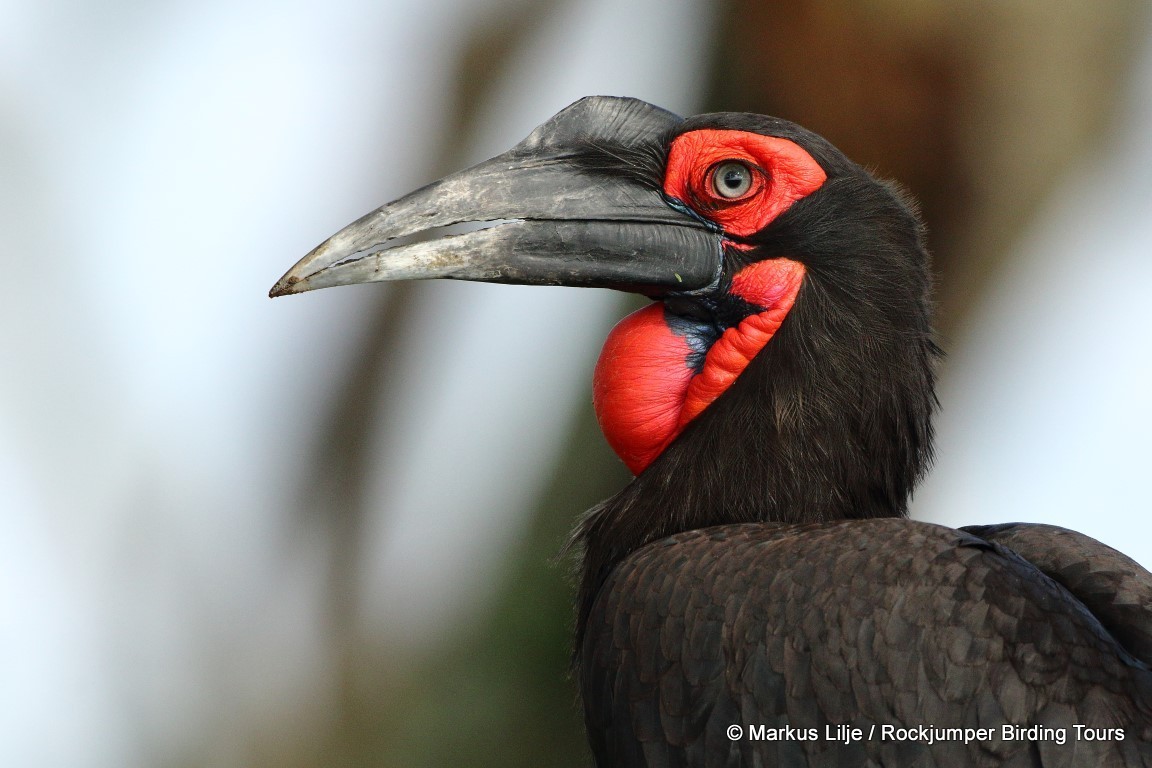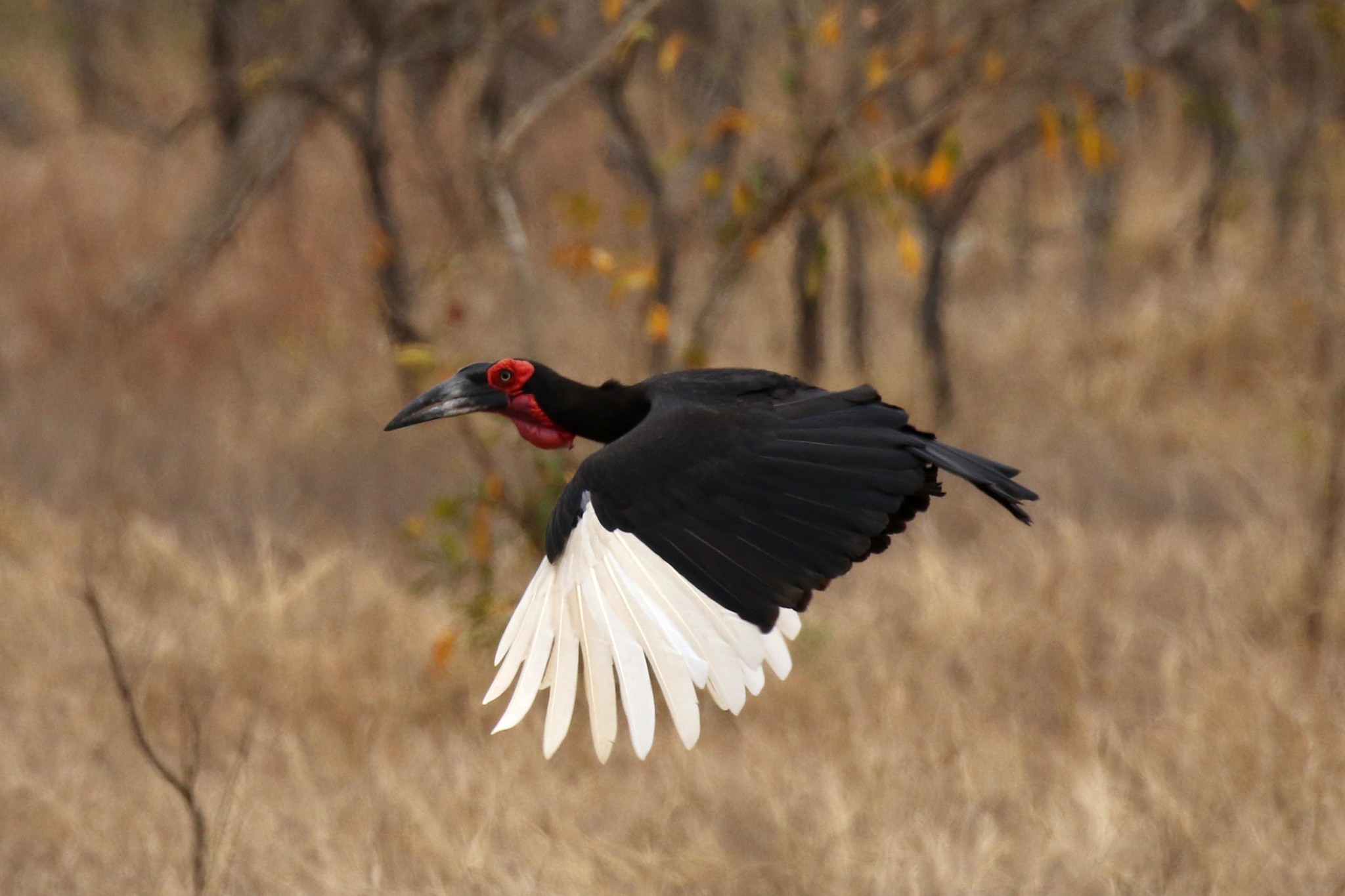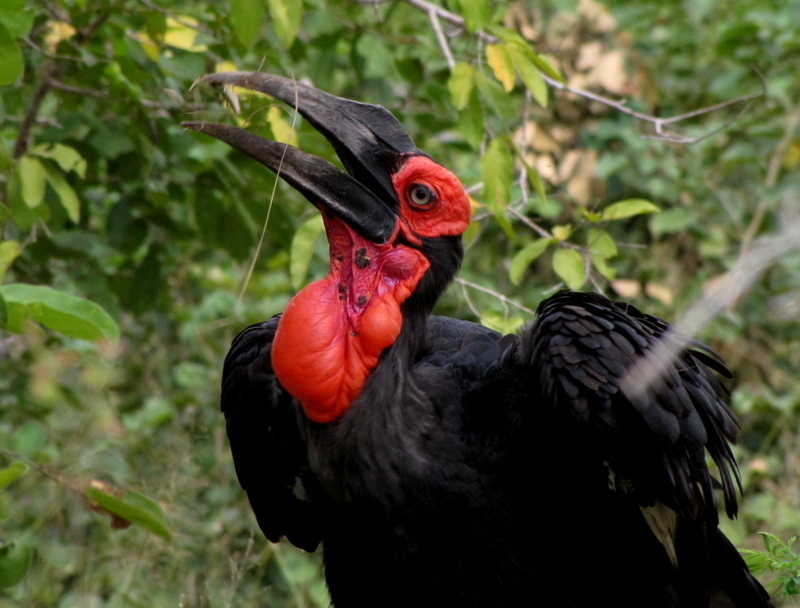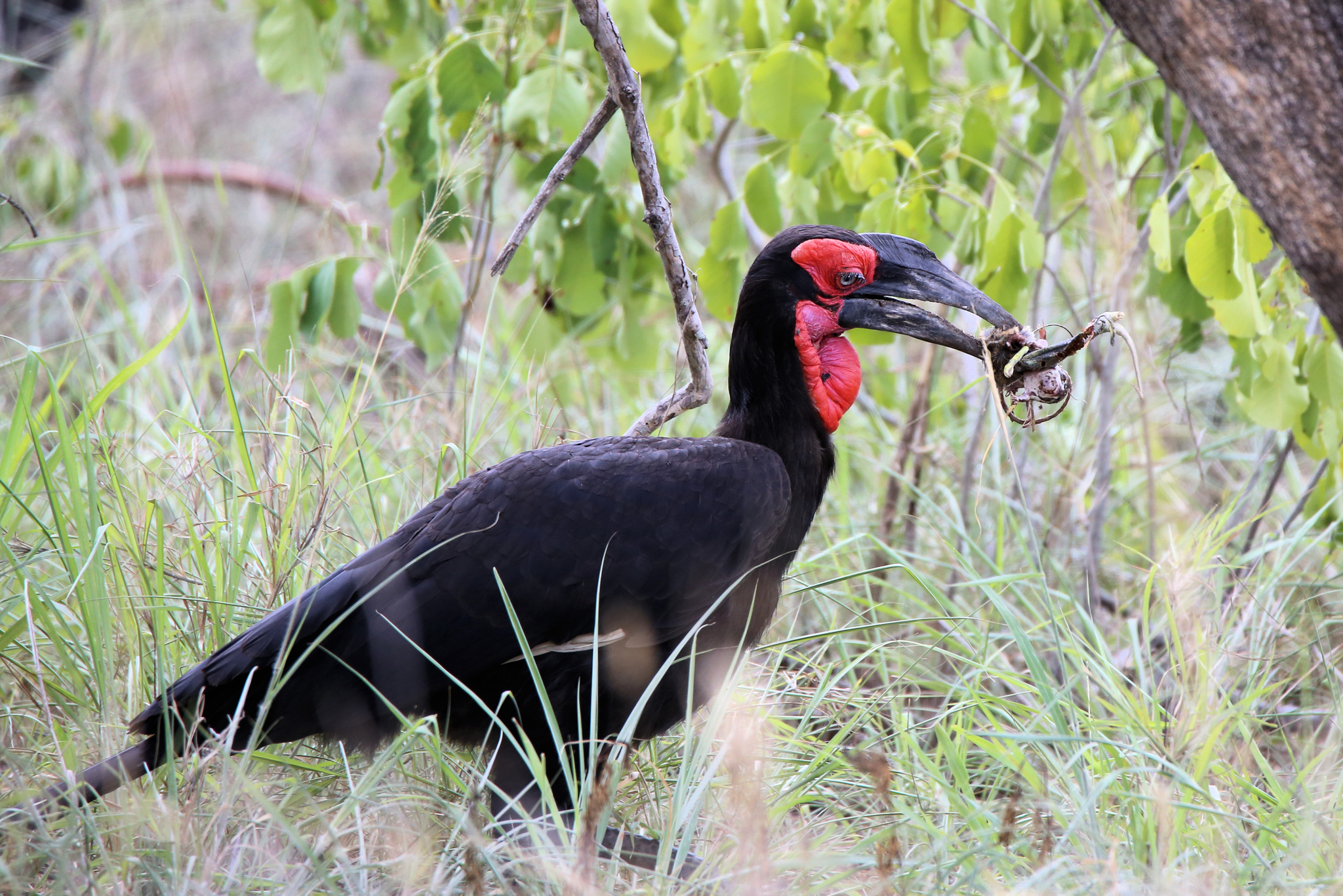- Home
- Conservancy
- Southern Hornbill
WHERE TO SEE Southern Hornbill
Description
Description
This is a large bird, at 90 to 129 centimetres (35.4 to 50.8 in) long. Females weigh 2.2 to 4.6 kilograms (4.9 to 10.1 lb), while the larger males weigh 3.5 to 6.2 kilograms (7.7 to 13.7 lb).[2] Among standard measurements, the wing chord has been measured from 49.5 to 61.8 cm (19.5 to 24.3 in), the tail from 29 to 36 cm (11 to 14 in), the tarsus from 13 to 15.5 cm (5.1 to 6.1 in) and the culmen from 16.8 to 22.1 cm (6.6 to 8.7 in). Per Stevenson and Fanshawe, the Abyssinian ground hornbill is the larger species on average, at 110 cm (43 in), than the southern species, at 102 cm (40 in), but published weights and standard measurements contrarily indicate the southern species is indeed slightly larger.
The southern ground hornbill is characterized by black coloration and vivid red patches of bare skin on the face and throat (yellow in juvenile birds), which are generally believed to keep dust out of the birds eyes while they forage during the dry season. The white tips of the wings (primary feathers) seen in flight are another diagnostic characteristic. The beak is black and straight and presents a casque, more developed in males. Female southern ground hornbills are smaller and have violet-blue skin on their throats. Juveniles to six years old lack the prominent red pouch, but have a duller patch of grey in its place.
Fun Facts
Breeding And Life Cycle
The southern ground hornbill is an obligate cooperative breeder, with each breeding pair always assisted by at least two other birds. It is known via experiments in captivity that birds without six years experience as helpers at the nest are unable to breed successfully if they do become breeders. This suggests that unaided pairs cannot rear young and that helping skill as a juvenile is essential for rearing young as an adult.
In captivity, a maximum lifespan of 70 years is recorded, and it is generally believed that the life expectancy of a bird that survives long enough to fledge is as high as thirty years or more,which is comparable to more famously long-lived birds like the wandering albatross.Ground hornbills are believed to reach maturity at six to seven years, but very few breed at this age. Nests are almost always deep hollows in very old trees, though there exist reports ground hornbills have on occasions nested on rock faces.[8] One to three eggs are laid at the beginning of the wet season but siblicide ensures that only one nestling is ever fledged. The eggs measure 73 millimetres (2.87 in) by 56 millimetres (2.20 in) and are pure white in colour but very rough in texture.
The period of parental dependence following a 40 to 45-day incubation period and an 85-day fledging period is between one and two years depending on climatic conditions before young are independent of parents and helpers, which is the longest of any bird. This means that ground hornbills can normally breed successfully only every third year. Triennial breeding is extremely rare in birds: probably the only other bird which breeds on a triennial basis is the ornate hawk-eagle of Neotropical rainforests




